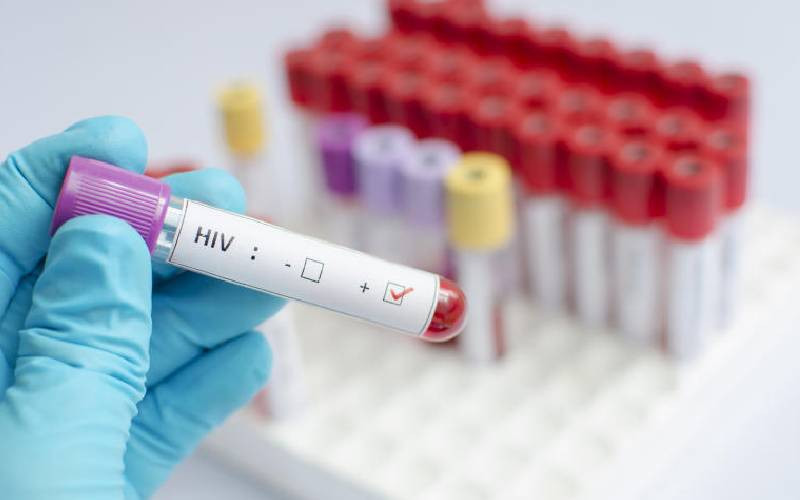
Concerns are raised over the surge in the use of electronic cigarettes popularly known as e-cigarettes among Generation Z.
An e-cigarette is a device that allows you to inhale nicotine in a vapour form rather than smoke.
According to study findings by the Brain and Mind Institute based at the Aga Khan University Nairobi, the prevalence of e-cigarette consumption in Kenya is at 5.8 per cent.
Alarmingly, 53 per cent of the total consumers are in the Generation Z age group bracket and 44 per cent are millennials.
Generation Z comprises people born between 1997 and 2012 (ages 11 – 26 years) while millennials are those born between 1981 and 1996 (ages 27 to 42).
Presenting findings of the report in Nairobi, Cyprian Mostert noted that of the 53 per cent, males comprise 70 per cent while women are 30 per cent.
“Interestingly, 66 per cent of the respondents have a Bachelor’s degree and 54 per cent have high gross income while 71 per cent live in large cities and aspire to be successful,” said Mostert.
The reason why e-cigarettes might be popular is they appear safe and trendy and a cool source of comfort from the pressures of life.
- France's Parliament considers ban on single-use e-cigarettes
- Alarm as students hooked to e-cigarette
Keep Reading
Why trend is a concern
Manufacturers of e-cigarettes usually create a narrative that they are a safe alternative to smoking regular cigarettes which is contrary to the reality.
According to Medical News Today, an online health publication, though manufacturers claim that e-cigarettes bypass many of the health risks of tobacco smoking, providing a healthful alternative, they are not safe at all.
The World Health Organisation (WHO) additionally explains that electronic cigarettes are the most common form of electronic nicotine delivery systems (Ends) and electronic non-nicotine delivery systems (Ennds) but there are others, such as e-cigars and e-pipes.
WHO says Ends and Ennds contain varying amounts of nicotine and harmful emissions.
The global health body says e-cigarette emissions typically contain nicotine and other toxic substances that are harmful to both users and non-users who are exposed to the aerosols second-hand.
WHO stresses that the consumption of nicotine in children and adolescents has deleterious impacts on brain development, leading to long-term consequences for brain development and potentially leading to learning and anxiety disorders.
Nicotine is highly addictive and some evidence suggests that never-smoker minors who use Ends can double their chance of starting to smoke tobacco cigarettes later in life.
Harmful to health
WHO evidence reveals that these products are harmful to health and are not safe.
Medical News Today notes that though manufacturers package and market e-cigarettes as tools for quitting or cutting down on smoking, the Food and Drug Administration categorises them as tobacco products.
According to the Centers for Disease Control and Prevention, the use of e-cigarettes is unsafe for kids, teens, and young adults and most e-cigarettes contain nicotine.
Studies show that young people who use e-cigarettes may be more likely to smoke cigarettes in the future.
High tax, low consumption
Based on that strong evidence of the health risks of e-cigarettes, civil society like the National Taxpayers Association (NTA) is now pushing for heavy taxation to discourage its usage among members of the public.
NTA in partnership with Tax Justice Network Africa, a pan-African research and advocacy organisation, is implementing a project on Tobacco Tax Advocacy in Africa.
The overall goal of the project is to discourage the use of tobacco and tobacco products which are known to be harmful to households and economies.
To address the current problem of tobacco consumption in Kenya, NTA chief executive officer Irene Otieno is calling for aggressive taxation on tobacco products.
“We are lobbying to have the tax on tobacco move to 70 per cent in line with global standards, but we have not achieved much traction yet. We are also pushing to have a unified tax system on tobacco products,” she says.
Ms Otieno says another big bone of contention they have with the government is the fact that Kenya Revenue Authority is rewarding the high taxpayers like British American Tobacco for being among the highest taxpayers but at the expense of consumer health.
“BAT might be bringing in the taxes but at what expense? Data in our possession shows that from every dollar in tax from tobacco products, you use four dollars to treat disease from the usage of those products,” she pointed out.
In the recent past, the Senate has called on the government to establish rules to govern the production, sale, advertising, and consumption of synthetic nicotine, and control the illicit trade of counterfeit products.
A report by NTA has identified tobacco taxation as one of the six core tobacco demand reduction measures and is recognised as the most effective control measure for reducing tobacco consumption by Article 6 of the WHO Framework Convention on Tobacco Control (WHO FCTC).
NTA notes that Kenya is still grappling for answers regarding the optimal tax structure for cigarettes that does not negatively impact markets and tax revenues as well as public health objectives.
“Kenya still applies a specific tiered excise tax on cigarettes, yet a uniform tax rate is generally accepted as the superior form of tax with respect to controlling consumption and maximising revenues,” says NTA.
NTA notes that the tiered system enhances the affordability of cigarettes among the poor.
It may thus lead to relatively higher levels of consumption especially among the poor, increased initiation of cigarette use by the youth, increased loss of income due to tobacco-attributable diseases; loss in productivity, and increased poverty.
Evidence indicates that the tiered tax is inferior to the uniform tax with respect to the achievement of Sustainable Development Goal target 3.4 which seeks to “reduce premature mortality from Non-Communicable Diseases by one third” and SDG target 3 which seeks to “strengthen country-level implementation of the WHO FCTC.”
Lobbyists are concerned that the tiered tax shall be relatively more prone to tax avoidance, evasion, and corruption. In addition, there is a possibility of political interference by the powerful tobacco companies given the recent changes in government stance in tax policy.
Another way forward that NTA is proposing to reduce tobacco use consumption is a track and trace system to be expanded to cover e-cigarette products to minimise illicit trade.
There is also a need to empower the Kenya Revenue Authority to monitor online trade.
It is important to tailor-made messaging directed at the middle class to caution about the dangers of e-cigarettes.
Most importantly, NTA urges schools to play a more active role in screening for the consumption of these products because learners are the core target.
 The Standard Group Plc is a multi-media organization with investments in media platforms spanning newspaper print
operations, television, radio broadcasting, digital and online services. The Standard Group is recognized as a
leading multi-media house in Kenya with a key influence in matters of national and international interest.
The Standard Group Plc is a multi-media organization with investments in media platforms spanning newspaper print
operations, television, radio broadcasting, digital and online services. The Standard Group is recognized as a
leading multi-media house in Kenya with a key influence in matters of national and international interest.











